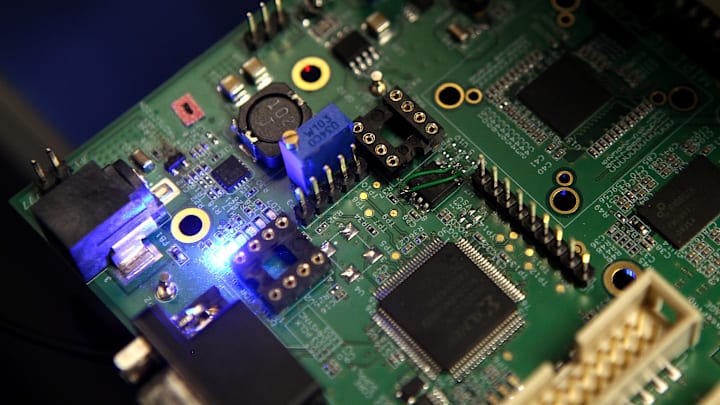The semiconductor industry, which many people call the backbone of modern technology, is experiencing a significant revival due to the combination of innovative advancements, strategic investments, and the ever-growing demand for semiconductors.
Technological Advancements
Despite concerns about the slowing pace of Moore's Law, which predicts the doubling of transistors on a chip approximately every two years, the industry continues to innovate. Graphine and other advanced materials, along with the development of 3D chip architectures, are extending the capabilities of semiconductors and improving performance and efficiency.
AI and Machine Learning
The rise of artificial intelligence and machine learning are creating a demand for semiconductors that can provide the immense computational power needed by modern Graphics Processing Units(GPUs) and other resource-intensive systems.
Quantum Computing
Quantum computing is a new form of computing that has been gaining a lot of traction, and semiconductors are an important part of the technology. The development of quantum processors, which use qubits instead of traditional bits, could revolutionize industries from cryptography to materials science.
Strategic Investments
governments worldwide are investing heavily in semiconductors, as are many major tech companies, including Intel, Samsung, and TSMC, who are aiming to maintain a competitive edge.
Growing Demand
The demand for smartphones, laptops, and other consumer electronics is strong, and consumers regularly expect faster, more efficient devices, which in turn requires continuous advancements in semiconductor technology.
Automotive Industry
The automotive sector is increasingly reliant on semiconductors for everything from electric vehicles (EVs) to advanced driver-assistance systems (ADAS).
Internet of Things (IoT)
The increase of IoT devices, which connect and communicate over the internet, like smart home devices, is another significant driver of semiconductor demand.
Challenges and Opportunities
- The semiconductor industry has faced significant supply chain challenges, especially during COVID-19, which highlights the need for more resilient and diversified supply chains.
- The environmental impact of semiconductor manufacturing is a growing concern, and many companies are looking for greener options.
- As the industry evolves, there is a pressing need for skilled talent in semiconductor design, engineering, and manufacturing.
What Innovations Are on the Horizon for the Semiconductor Industry?
Future innovations will likely include the integration of advanced materials, further miniaturization of chips, and the development of new semiconductor technologies such as neuromorphic computing and photonic chips.
Follow Geeksided to learn more about the future of semiconductors and leave comments and questions.
